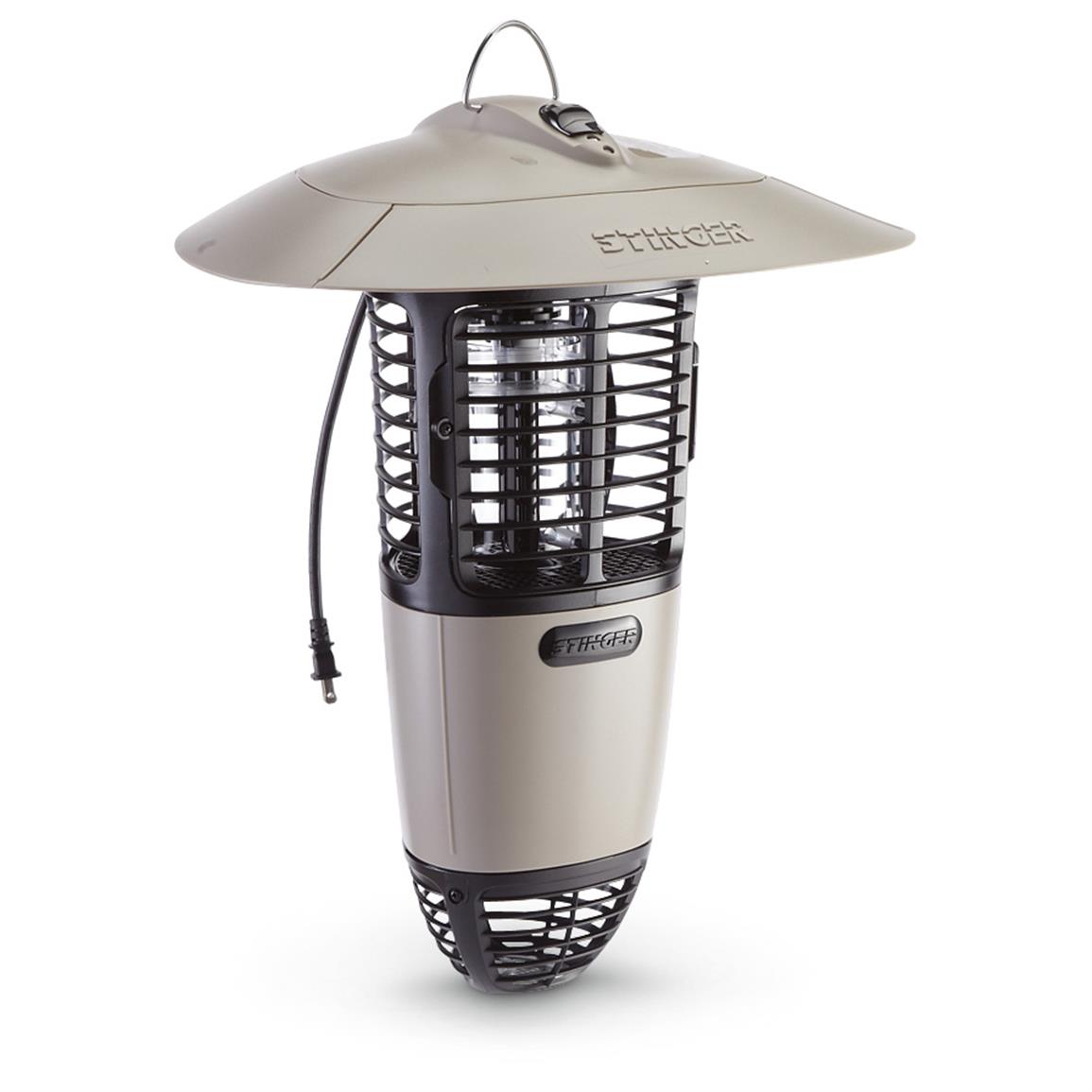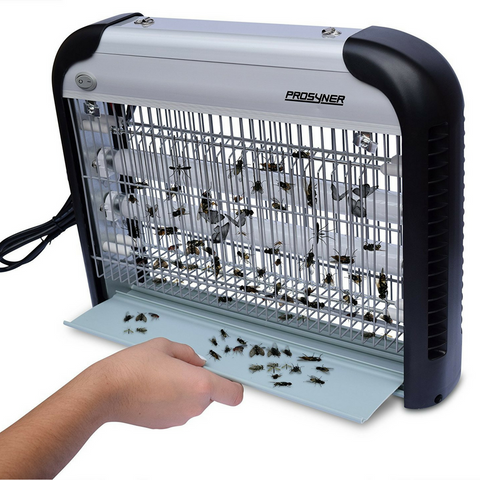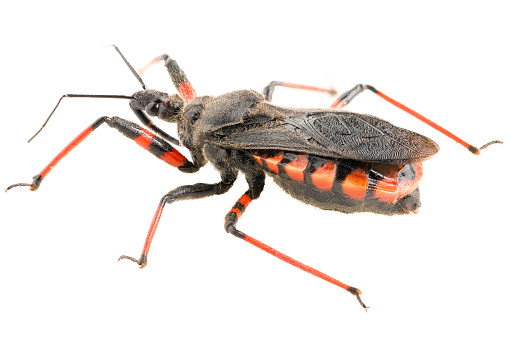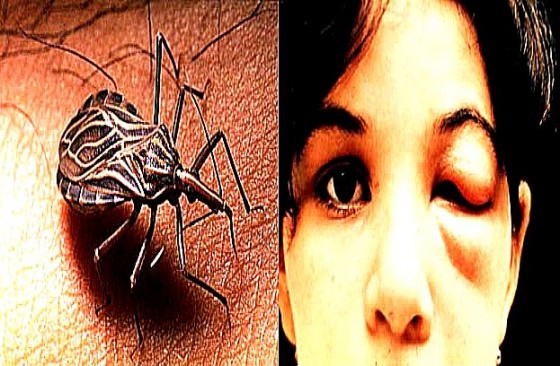CHOOSING AN INDOOR BUG ZAPPER
Are you tired of all the unsuccessful attempts to get rid of mosquitos from your bedroom before you go to sleep? Perhaps you have a large garden or live near a lake or river and all kinds of insects are frequent guests in your house? Fortunately, there is a simple solution to your problems. Try using an indoor bug zapper – a device that will help you eliminate all the unwanted flying insects, such as mosquitos or flys.
When looking for a best indoor bug zapper you should first find out what it is that you need exactly. There is a number of bug killers available on the market nowadays. Here’s an overview of the most popular ones:
1. Electronic Insect Control

This is the kind of an indoor bug zapper that is plugged directly into an outlet. It emits a strong LED light which attracts mosquitos and all other kinds of flying insects. The insects then fly into the device’s electric grid which obviously is deadly for them.
The cool thing about this kind of electronic bug zapper is that it does not take up too much space and can be used as a night light. As opposed to the old school insect controls, this device does not use any chemicals so it is perfectly safe even when there is a little baby around.
2. Indoor/Outdoor Rechargeable Bug Zapper

It looks like an outdoor lamp. You can hang it inside a room or outside. It produces a nice blue light that is supposed to attract flying insects. The insects are zapped upon flying into the device. The downside of this product is its relatively large size and the design might also not be suitable for some homes.
3. Electronic Bug Zapper

This hand held bug killer is supposed to be used mainly as an indoor bug zapper, as it should never be used outside when it is raining or it is still wet. It resembles a tennis racket and works in a similar way – you have to hit an insect with it just like you hit a tennis ball.
The result, however, is not a top spin, but a zapped mosquito or fly. There are plenty of electronic bug zapper models available from different producers and most of them are battery powered. Despite the fact that this insect killer is not a toy, hunting for mosquitos with this device can actually prove to be surprisingly fun.
When looking to buy an indoor bug zapper, you have to choose the most appropriate device for you. The electronic insect control is definitely a very convenient product that works in the plug-and-forget manner. On the other hand, if you want a portable insect killer that could be taken on a trip and used both inside and outside (if it doesn’t rain), the electronic bug zapper might be the right choice.
Relevant Resources:
What Are Kissing Bugs?
Recent news reports imply that fatal pests are invading the U.S., imposing deadly snacks on humans. These misleading reports were shared broadly on social networking, and health departments across the U.S. have then been inundated with emails and calls from worried residents.
Before you fear, here are the facts that you want to know about kissing bugs and Chagas disease.
WHAT ARE KISSING BUGS?

Kissing bugs are authentic bugs at the assassin bug family (Reduviidae), but do not let this frighten you. This insect arrangement, Hemiptera, comprises everything from aphids to leafhoppers, all of which have piercing, sucking mouthparts. In this huge arrangement, the assassin bugs are a bigger group of mostly predators and parasitic insects, some of which use remarkable cunning and ability to capture and eat other insects. They are known by an assortment of nicknames, such as the both menacing "bloodsucking conenoses." Though they look nothing like these, triatomine bugs are linked to bedbugs (also from the order Hemiptera) and discuss their own bloodsucking habit. Triatomine bugs feed on the blood of reptiles, birds, and mammals, including people.

Triatomine bugs got the nickname kissing bugs since they are inclined to bite individuals on the surface, especially around the mouth. Kissing bugs are directed by the odor of their carbon dioxide we exhale, which direct them into our faces. And since they feed during the night, they are inclined to locate us while we are in bed, using just our faces exposed beyond our bedding.
HOW DO KISSING BUGS CAUSE CHAGAS DISEASE?
Kissing bugs do not really cause Chagas disease, but a few kissing bugs take a protozoan parasite in their bowels that really does transmit Chagas disease. The parasite, Trypanosoma cruzi, isn't transmitted as soon as the kissing bug bites you. It is not within the kissing insect's saliva, and is not introduced to the bite wound while the insect is drinking your bloodstream.

Rather, while feeding in your bloodstream, the kissing bug can also pennies in your skin, which stool may contain the parasite. If you scrape the sting or otherwise rub that area of your skin, then you can move the parasite to the open wound. The parasite can also enter your body in different ways, like in the event that you touch your skin and then rub your attention.
Someone infected with the T. cruzi parasite may transmit Chagas disease to other people, but only in very restricted ways. In accordance with the Centers for Disease Control and Prevention (CDC), it may be transmitted from mother to baby congenitally, and via blood transfusions or organ transplantation.
A Brazilian physician, Carlos Chagas, found Chagas disease in 1909. The disorder is also known as American trypanosomiasis.
WHERE DO KISSING BUGS LIVE?
In contrast to the headlines you have noticed, kissing bugs aren't new to the U.S., nor are they invading North America. Virtually all of the estimated 120 species of kissing bugs reside in the Americas, and of those, only 12 species of kissing bugs reside north of Mexico. Kissing bugs have lived here for centuries, long prior to the U.S. even existed, and are based in 28 nations. Over the U.S., kissing insects are most abundant and varied in Texas, New Mexico, and Arizona.
Even over the countries where kissing insects are known to reside, we often misidentify kissing insects and think they're more prevalent than they really are. Researchers conducting a citizen science project at Texas A&M University requested the people to send them smelling bugs for investigation. They reported that over 99 percent of the people queries about insects they considered to function as kissing bugs were really not smelling bugs.
There are lots of different bugs which appear like kissing bugs.
CHAGAS DISEASE IS RARE IN THE U.S.
Additionally, it is important to see that kissing bugs seldom infest modern houses. Triatomine bugs are connected with impoverished places, where houses have dirt floors and deficiency window displays. At the U.S., kissing bugs generally reside in rodent burrows or poultry coops, and may be an issue in pet kennels and shelters. Contrary to the box elder bug, yet another Hemipteran insect which has a terrible habit of finding its way to people's homes, the kissing bug will remain outside.
The University of Arizona's Department of Neuroscience reports that only 6 instances of locally transmitted Chagas disease have been reported at the southern U.S., in which Triatomine bugs have been well recognized.
Aside from the simple fact that U.S. houses have a tendency to be inhospitable to kissing bugs, there is another crucial reason why disease rates are so low in the U.S.. The kissing bug species which reside north of Mexico have a tendency to wait to feces to get a good 30 minutes or so as soon as they indulge into a blood meal. From the time the kissing bug defecates, it is normally a fantastic distance from the skin, so that it's parasite-laden feces does not come in touch with you.
Use bug zapper for kill all bug in your garden. Don't worry Its a great silent killer and safe way.